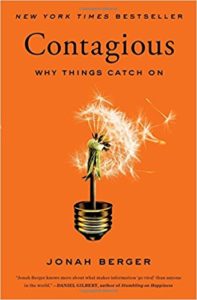Business Blogging Earns High Scores

“There’s no doubt that blogs afford small businesses big payoffs. They humanize a business, position you as an expert in your field, and work hand-in-hand with your website and social media presence to improve your search engine rankings,” the SCORE website advises its members. But, since finding the time or an eager author to write an original blog for every slot in your calendar isn’t always possible, Score offers tips for “staying afloat” in your blogging efforts, including:
- freshening up old blogs
- distilling white papers or webinars into quick tips or how-to’s
- using “filler blogs that link to other sources
- showcasing photos from an event that you recently held
“Think of your website as a garden. If it’s left unattended, weeds will grow and your plants are likely to shrivel up and die,” cautions crazyegg.com. “To get the most out of any garden, you must prune, trim, fertilize, aerate, plant, and remove pests in a strategic manner.” Interestingly, one piece of advice crazyegg offers is this: “If you don’t have a business blog, get one! It’s a great way to update your site—even if you only have time to do it once a month.”
If you’re lacking ideas for your blog, crazyegg offers suggestions:
- Review something – the newest business book or hit movie. In a way, I’ve often reflected, what we do when we write business blog content offering information and opinion is comparable to a book review. Online visitors are “test-reading” your company or practice through reading your blog posts. They want to see whether you understand their problems and can quickly and effectively help solve those. A review, though, is more than a mere summary. Whether you’re blogging for a business, for a professional practice, or for a nonprofit organization, you’ve got to have an opinion, a slant, on the information you’re serving up for readers.
2. Take a poll. Then, write content to address those things. Using blogs to perform a focus group function could be a very feasible marketing strategy. Blog readers would weigh in on their own time in the form of responding to surveys, offering ideas or ratings – all good techniques to stimulate interaction with target customers.
3. Interview someone. You can do this via email or phone. As a blog-content-writer-for-hire by business owners and professional practitioners, I’ve found, there’s an interesting way to get the job done: the interview format. In a face-to-face (or Skype) interview with a business owner or executive (or professional practitioner), I am able to capture their ideas and some of their words, then add “framing” with my own questions and introductions, to create a blog post more compelling and “real” than the typical narrative text.
As SCORE advises its business owner members, business blogging earns high scores!




Follow us online!